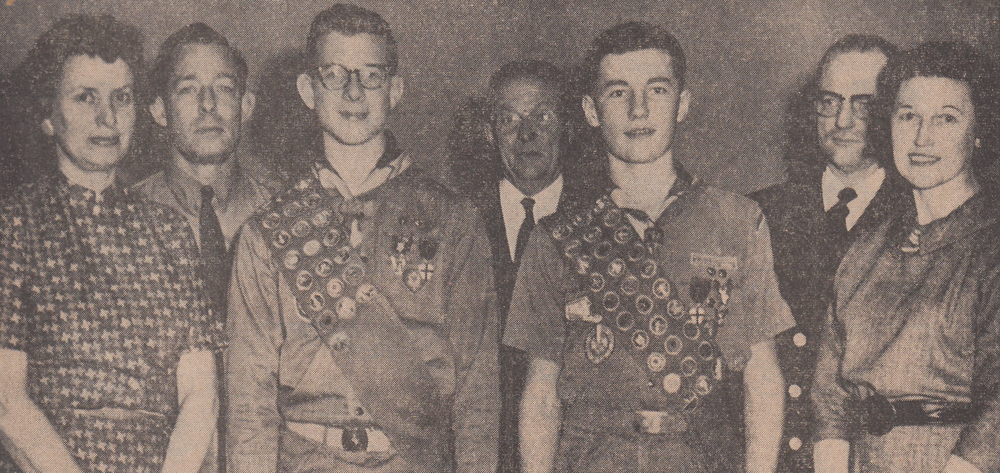Community Groups & Organizations, General History
Growing Boys Instead of Grapes
by Kilian Fitzgerald
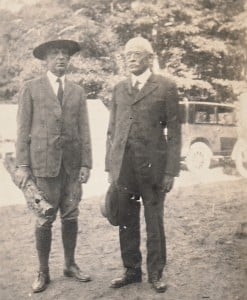 The Boys Scouts of America, Napa Country was founded by Elmer Bickford and John L. Shearer in 1911. Bickford was from a Napa banking family and well-regarded as a community leader. He was an avid photographer and bird watcher. Shearer was the President of the County Board of Education and the founder of Shearer Elementary, known back then as the John L. Shearer School. Together, these two men introduced the Boy Scouts of America to Napa.
The Boys Scouts of America, Napa Country was founded by Elmer Bickford and John L. Shearer in 1911. Bickford was from a Napa banking family and well-regarded as a community leader. He was an avid photographer and bird watcher. Shearer was the President of the County Board of Education and the founder of Shearer Elementary, known back then as the John L. Shearer School. Together, these two men introduced the Boy Scouts of America to Napa.
The Boy Scouts of America is an organization that has branches in all fifty states. Napa County has seven Boy Scout troops, including Troop #832 which meets at the Napa Valley Elks Lodge and Troop #2 which meets at Napa’s First United Methodist Church. Napa’s Troop 2 is particularly significant as it was established in 1912 and is still active today.
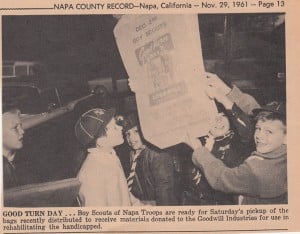 Boy Scouts have been extremely beneficial to the Napa community since their establishment over a hundred years ago. Many of the troops engage in events such as food drives, Christmas tree pick-ups, and much more in order to help the community. Troop #832 in particular frequently caters dinners for World War II and Vietnam War veterans due to the Napa Valley Elks Lodge’s affiliation with several veterans organizations. The service of Napa Boy Scouts goes back as far as 1918 where Napa Scouts raised $730,000 in Liberty Bonds – well over their original goal was $6500,000 – for the purpose of funding the United States and Allied efforts in World War I.
Boy Scouts have been extremely beneficial to the Napa community since their establishment over a hundred years ago. Many of the troops engage in events such as food drives, Christmas tree pick-ups, and much more in order to help the community. Troop #832 in particular frequently caters dinners for World War II and Vietnam War veterans due to the Napa Valley Elks Lodge’s affiliation with several veterans organizations. The service of Napa Boy Scouts goes back as far as 1918 where Napa Scouts raised $730,000 in Liberty Bonds – well over their original goal was $6500,000 – for the purpose of funding the United States and Allied efforts in World War I.
Although long considered a staple of American culture and community, the Boy Scouts actually originated in Great Britain. The organization emerged from the military and survival techniques of promoted by Lord Robert Baden-Powell. Lord Baden-Powell was a highly decorated British soldier who became a hero for his involvement in the Second Boer War of 1899-1902. A soldier and outdoorsman, Baden-Powell published a field guide titled Aids to Scouting in 1899 that would help soldiers develop wilderness survival skills, first aid training and other vital skills. Baden-Powell’s fame helped make the book an instant bestseller. Much to his surprise, boys were buying and reading his field guide following his victory in the Siege of Mafeking in 1900. His next field guide, titled Scouting for Boys targeted this audience by including games and songs and removing some of the military themes and replacing them with lessons on morals and good deeds. After the success of Scouting for Boys, Baden-Powell decided to create the Boy Scout organization. His first trial run for the organization took place on June 25, 1907 when Baden-Powell and a group of twenty-one boys spent two weeks camping on Brownsea Island in Dorset. Baden-Powell taught the boys camping, lifesaving, and many other skills.
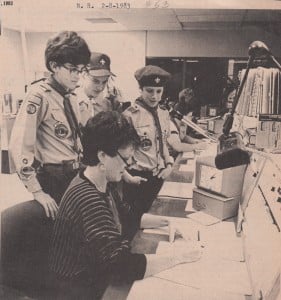 On an unknown foggy London night in 1909, William D. Boyce, a publisher from Chicago was hopelessly lost. A local scout, upon seeing Boyce’s predicament, lead him to his destination. When offered a tip by the grateful American, the scout refused saying that he was just doing his “daily good turn.” Intrigued, Boyce scheduled a meeting with Lord Baden-Powell to discuss Scouting. During the fateful meeting, Boyce was impressed by the organization and the community it had created among the young men of London. Upon leaving London with the idea of Boy Scouts fresh in his mind, Boyce set out to establish the American counterpart to the organization. Boyce succeeded in his goal and on February 8, 1910, the Boy Scouts of America was born. The identity of the unknown scout was never revealed, but the unknown scout was honored with a statue in London’s Gilwell Park. The statute, a representation of the Silver Bear Award but on a larger scale, holds an inscription that reads “To the Unknown Scout Whose Faithfulness in the Performance of the Daily Good Turn Brought the Scout Movement to the United States of America.” The use of the Silver Bear Award is especially fitting due to it being solely given to those who provide the Boy Scouts of America with invaluable contributions that affect the organization on a national scale.
On an unknown foggy London night in 1909, William D. Boyce, a publisher from Chicago was hopelessly lost. A local scout, upon seeing Boyce’s predicament, lead him to his destination. When offered a tip by the grateful American, the scout refused saying that he was just doing his “daily good turn.” Intrigued, Boyce scheduled a meeting with Lord Baden-Powell to discuss Scouting. During the fateful meeting, Boyce was impressed by the organization and the community it had created among the young men of London. Upon leaving London with the idea of Boy Scouts fresh in his mind, Boyce set out to establish the American counterpart to the organization. Boyce succeeded in his goal and on February 8, 1910, the Boy Scouts of America was born. The identity of the unknown scout was never revealed, but the unknown scout was honored with a statue in London’s Gilwell Park. The statute, a representation of the Silver Bear Award but on a larger scale, holds an inscription that reads “To the Unknown Scout Whose Faithfulness in the Performance of the Daily Good Turn Brought the Scout Movement to the United States of America.” The use of the Silver Bear Award is especially fitting due to it being solely given to those who provide the Boy Scouts of America with invaluable contributions that affect the organization on a national scale.
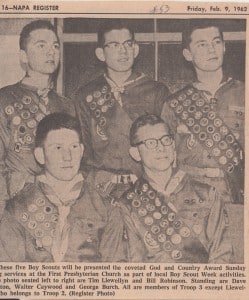 Though a great story, the legend of the unknown scout, like many American tales, is not entirely accurate. William D. Boyce and the unknown scout did exist, however the unknown scout only helped Boyce walk across the street to his hotel, there was no foggy night, Boyce was never lost, and he never meet with Lord Baden-Powell on that trip. Despite the exaggerations of the story, the original themes of the event still remain the same. Boyce was impressed with the generosity and kindness of the unknown scout who refused the offered tip in real life. After hearing of the Boy Scout organization, Boyce’s curiosity lead him to the London offices of the Boy Scouts the very next day. There he met with an official who was most certainly not Baden-Powell and received a great deal of information about the workings of the organization. When Boyce returned to America, he founded the Boy Scouts of America organization with the help of Richard R. Donnelly and Andrew McNally, two Chicago businessmen and personal friends of Boyce.
Though a great story, the legend of the unknown scout, like many American tales, is not entirely accurate. William D. Boyce and the unknown scout did exist, however the unknown scout only helped Boyce walk across the street to his hotel, there was no foggy night, Boyce was never lost, and he never meet with Lord Baden-Powell on that trip. Despite the exaggerations of the story, the original themes of the event still remain the same. Boyce was impressed with the generosity and kindness of the unknown scout who refused the offered tip in real life. After hearing of the Boy Scout organization, Boyce’s curiosity lead him to the London offices of the Boy Scouts the very next day. There he met with an official who was most certainly not Baden-Powell and received a great deal of information about the workings of the organization. When Boyce returned to America, he founded the Boy Scouts of America organization with the help of Richard R. Donnelly and Andrew McNally, two Chicago businessmen and personal friends of Boyce.
The American organization grew in popularity through the stories of Theodore Roosevelt, at the time the 26th President of the United States and a famous war hero, outdoorsman, and a national celebrity. Boyce continued to fund the organization until his death on June 11, 1924. He is honored today as one of the founders of the Boy Scouts of America.
Bibliography
Bertolucci, Dennis. “Boy scout troop reaches rare 100-year milestone.” napavalleyregister.com. Last modified February 13, 2012. Accessed October 14, 2015. http://napavalleyregister.com/news/opinion/mailbag/boy-scout-troop-reaches-rare–year-milestone/article_836bd1d0-55f9-11e1-b2b8-0019bb2963f4.html.
Boy Scouts of America. “Silver Buffalo Awards.” scouting.org. Accessed October 14, 2015. http://www.scouting.org/scoutsource/Awards/SilverBuffalo.aspx.
“Boy Scouts movement begins.” History.com. Last modified 2009. Accessed October 14, 2015. http://www.history.com/this-day-in-history/boy-scouts-movement-begins.
“Elmer Bickford and John L. Shearer.” Photograph. 2008.218.3. Photograph Collection. Napa County Historical Society, Napa, CA. Accessed October 28, 2015. http://napahistory.pastperfectonline.com/photo/E7BB40F3-3106-4FA8-9F69-287937519055.
“Graduation Diploma for Henry Barrette.” June 14, 1901. 2009.67, Flat Poster Box #2. Napa County Historical Society.
“History.” Shearer Elementary School. Accessed October 20, 2015. https://shearer-nvusd-ca.schoolloop.com/history.
Peterson, Robert. “The Man Who Got Lost in the Fog.” Scouting Magazine. Last modified October 2001. Accessed October 14, 2015. http://scoutingmagazine.org/issues/0110/d-wwas.html.
Rhoads, Mark. “Illinois Hall of Fame: William D. Boyce.” Illinois Review. Last modified September 23, 2006. Accessed October 14, 2015. http://illinoisreview.typepad.com/illinoisreview/2006/09/illinois_hall_o_22.html.
“Tale Of The Unknown Scout.” scouting.org. Accessed October 14, 2015. http://www.scouting.org/filestore/pdf/Founders.pdf.


